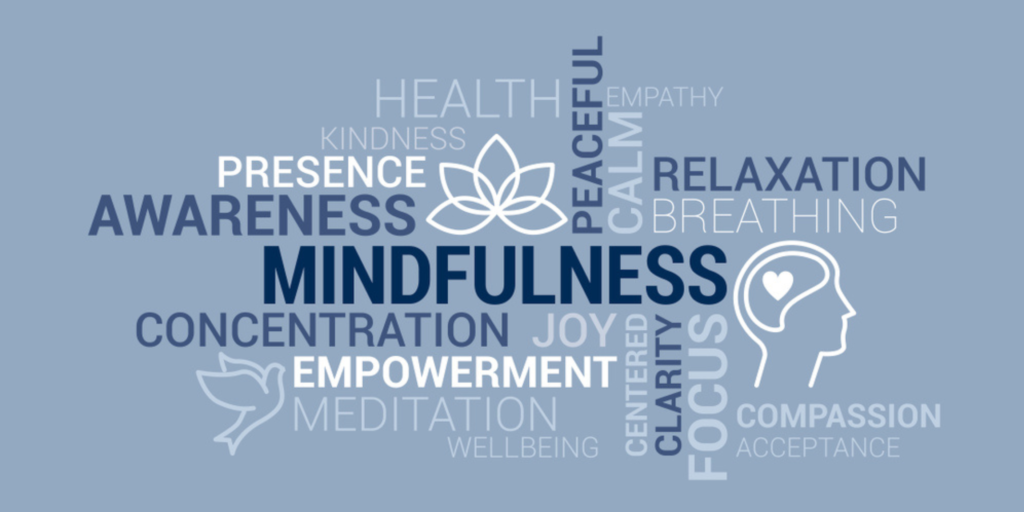Introduction
“Loving-Kindness Meditation” Did you know that doing loving-kindness meditation can help you live longer? It can also help you feel less pain and enjoy better life satisfaction. It can improve your relationships and make you more resilient. It may sound too good to be true, but the scientific research backs up these remarkable claims. Loving-kindness meditation (LKM) is an ancient Buddhist practice. It can grow goodwill and friendliness. It’s towards yourself and others.
In this article, I’ll explain what loving-kindness meditation is. I’ll also cover how it works and its benefits according to research. I’ll also give you useful resources and scripts. They will help you try LKM, deepen your existing practice, and introduce it to your clients.
What is Loving-Kindness Meditation?

In this article, I’ll explain what loving-kindness meditation is. I’ll also explain how it works and its benefits from research. I’ll also give you useful resources and scripts. They will help you try LKM, deepen your practice, and introduce it to your clients.
Origins and Meaning of Metta Bhavana
The term “loving-kindness meditation” is the English translation. It comes from the Pali phrase “metta bhavana.”” It comes from the ancient Buddhist tradition. “Metta” means goodwill, benevolence, or loving-kindness. “Bhavana” is the act of cultivating a mental state.
The Four Brahma Vihara Practices
Loving-kindness meditation is the first of the Four Brahma Vihara practices. The Buddha taught them. The Brahma Viharas are four sublime attitudes. People cultivate them through meditation. They are loving-kindness (metta), compassion (karuna), empathetic joy (mudita), and equanimity (upekkha).
If I Told You I Had the Magic Formula…
Imagine if I told you I had a magic formula. It could give you a longer life. It would also mean less pain, more satisfaction, better relationships, and stronger resilience. Would you believe me? Probably not. But, the ancient practice of loving-kindness meditation (LKM) can deliver these benefits. Scientific research backs up these claims.
Life speeds up. It’s driven by many forces beyond our control. They draw more of us to loving-kindness meditation. It is a radical act of being. The Buddhist tradition roots this ancient practice. It is a radical act of love. It’s for a world that often feels more and more disconnected and chaotic.
Loving-kindness meditation transforms our lives. It does this by nurturing goodwill, compassion, and connectedness. It nurtures them towards oneself and others. It is a radical act of self-care and self-acceptance. It lets us reclaim our sense of meaning and purpose in the face of modern life’s challenges.
Loving-Kindness Meditation

Loving-kindness meditation is a transformative practice. It involves building feelings of goodwill, compassion, and connection to oneself and others. The practice starts by sending love to oneself. Then, it expands to include loved ones, acquaintances, and all living beings.
The Practice Explained
A 40-minute loving-kindness meditation can be a powerful tool. It can help with personal growth and inner peace. To begin, find a dignified sitting posture or lying down, whatever you prefer. Bring your awareness to the breath and the body as a whole. Breathe and rest here. Build a stable platform of awareness. Do it by riding the waves of the breath.
Scientific Benefits of LKM
Many studies have demonstrated the profound benefits of loving-kindness meditation. Practitioners have reported increased self-compassion. They also reported improved relationships, better emotional regulation, and greater well-being. The practice is also linked to less depression and anxiety. It is also linked to more social connections and positive emotions.
You May Also Like:
Meditation For Stress And Anxiety: Stress Free Living 2024
Radical Act of Love in a Hectic World

The world is fast-paced and hyper-connected. One can view loving-kindness meditation as a radical act of love. The demands of modern life keep growing. Forces that often feel beyond our control drive them. More and more people are finding comfort in this ancient practice of thinking. It gives their lives meaning.
Finding Meaning and Sanity
We are moving towards meditation for many reasons. One is to keep our sanity. Another is to find meaning and perspective. Another is to cope with the stress and insecurity of this age. Loving-kindness meditation offers a break from modern life’s pace. It shows a way to rejoin with our inborn capacity. This capacity is for compassion, kindness, and self-acceptance.
Guided 40-Minute Loving-Kindness Meditation
Let’s begin a 40-minute loving-kindness meditation. Start by finding a comfortable seated or lying position. Use whatever feels natural for you. Bring your awareness to the breath and the body as a whole, breathing and resting here. Be aware from moment to moment. Do this by riding on the waves of your breath.
Setting the Stage
As you sit or lie down, take a few deep breaths. Allow your body to relax. Bring your focus to the gentle rise and fall of your abdomen as you inhale and exhale. With each breath, feel yourself becoming more grounded and present in the moment.
Sending Kindness to Loved Ones
When you feel at ease with your breathing, picture someone who loves you. This could be a family member, close friend, or beloved pet. Visualize this person or animal, and silently repeat phrases like “May you be happy. May you be well. May you be safe. May you be at peace.” Let these words resonate within you. They cultivate warmth, care, and acceptance towards your loved one.
Opening Your Heart to Loving-Kindness

As you continue to rest with the flow of your breathing, allow your heart to open and soften. Think of someone in your life who loves you no matter what. This person could be a family member, close friend, or beloved pet. Visualize this person or animal, and silently repeat phrases like “May you be happy. May you be well. May you be safe. May you be at peace.” Let these words resonate within you. They cultivate warmth, care, and acceptance towards your loved one.
Expanding the Field of Loving-Kindness
If you are open to expanding loving-kindness beyond yourself, look inward for a moment. Begin to expand the field of loving-kindness. Do so beyond your loved one and towards yourself. Silently repeat phrases like “May I be happy. May I be well. May I be safe. May I be at peace.” Let these words enter your mind. They will help you accept and be kind to yourself.
Widening the Circle
Keep breathing and resting in this practice. As you do, you can slowly widen the circle of loving-kindness. Include others in your life. This includes acquaintances, colleagues, and even those you had past difficulties with. Silently repeat the phrases. Replace “I” with “you”. Direct these kind words to each person.
Remember, loving-kindness is not about perfection. It’s not about eliminating all negative emotions. It is about opening your heart. It is about cultivating goodwill, compassion, and connectedness towards all beings. Allow the practice to unfold naturally. Trust that each moment of sincere effort can make a difference.
Directing Loving-Kindness Inward
If you wish to cultivate loving-kindness and focus it only on yourself, that’s fine for now. This is just for this practice period. Gently turn your attention inward and repeat the phrases “May I be happy. May I be well. May I be safe. May I be at peace.” Let these words resonate within you. They will nourish self-acceptance and self-compassion.
If you wish to focus on loving-kindness and aim it only at yourself, then do so in this practice period. That’s fine. It can be a powerful and transformative experience. By looking inward and repeating self-care affirmations, you cultivate loving-kindness. You allow it to take root in you.
Remember, there is no right or wrong way to practice loving-kindness meditation. If you feel drawn to focus only on being loving to yourself today, trust that feeling. Allow the practice to unfold in a way that nourishes your heart and soul.
You May Also Like:
History Of Acupuncture: 5 Millennia of Healing
Embracing Your Intrinsic Beauty

As we end this loving-kindness meditation, rest a moment. Rest in your own beauty, love, and kindness. Allow these qualities to shine. They will envelop you in a sense of deep self-acceptance and self-appreciation.
In our final moments together, enjoy the glow of your beauty, love, and kindness. Embrace the brightness that comes from you. It’s a sign of the beauty, love, and kindness inside you.
Resources for Deepening Your LKM Practice
To deepen your loving-kindness meditation practice, many resources can help you. You can find many guided LKM scripts and audio online. They are great for beginners or those looking to start a consistent practice.
Scripts and Guides
Using guided scripts and meditation guides can enhance your LKM experience. They are valuable tools for exploration. These resources often give step-by-step instructions. They also provide insight into the principles and goals of the practice. By following these guides, you can better understand loving-kindness meditation. You will also develop a more structured approach to your own practice.
Introducing LKM to Clients
You work with clients. It may be in a therapeutic or wellness setting. Introducing loving-kindness meditation can help them a lot. It can support their growth and well-being. By giving your clients i’ll also give useful resources and scripts to help you try lkm. They will deepen your existing practice and introduce it to your clients. You can help them build self-compassion. This will improve their relationships and help them feel more connected to the world.
Conclusion
In this article, we’ve explored loving-kindness meditation. It’s an ancient practice, also known as metta bhavana. We’ve explored the origins and meaning of this powerful technique. It is the first of the Four Brahma Vihara practices taught by the Buddha. We’ve discussed this article’s goal. It is to explain loving-kindness meditation. It is to explain how it works. It is to explain its benefits per research.
Also, we’ve provided useful resources and scripts. They will help you try loving-kindness meditation. They will also help you deepen your practice and introduce it to your clients. You can see the power of this practice. It fosters goodwill, compassion, and connectedness. You can add it to your life or share it with others. It can transform personal growth and well-being.
We’ve found that loving-kindness meditation is a radical act of love. This is true in our busy world. It offers a way to find meaning, sanity, and self-acceptance. It also brings self-appreciation. By embracing the beauty, love, and kindness within, we can unlock the benefits. This is an ancient practice.









